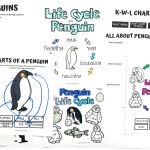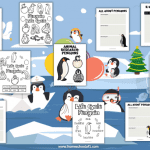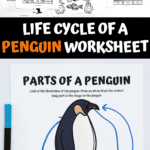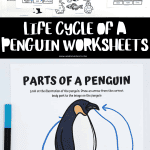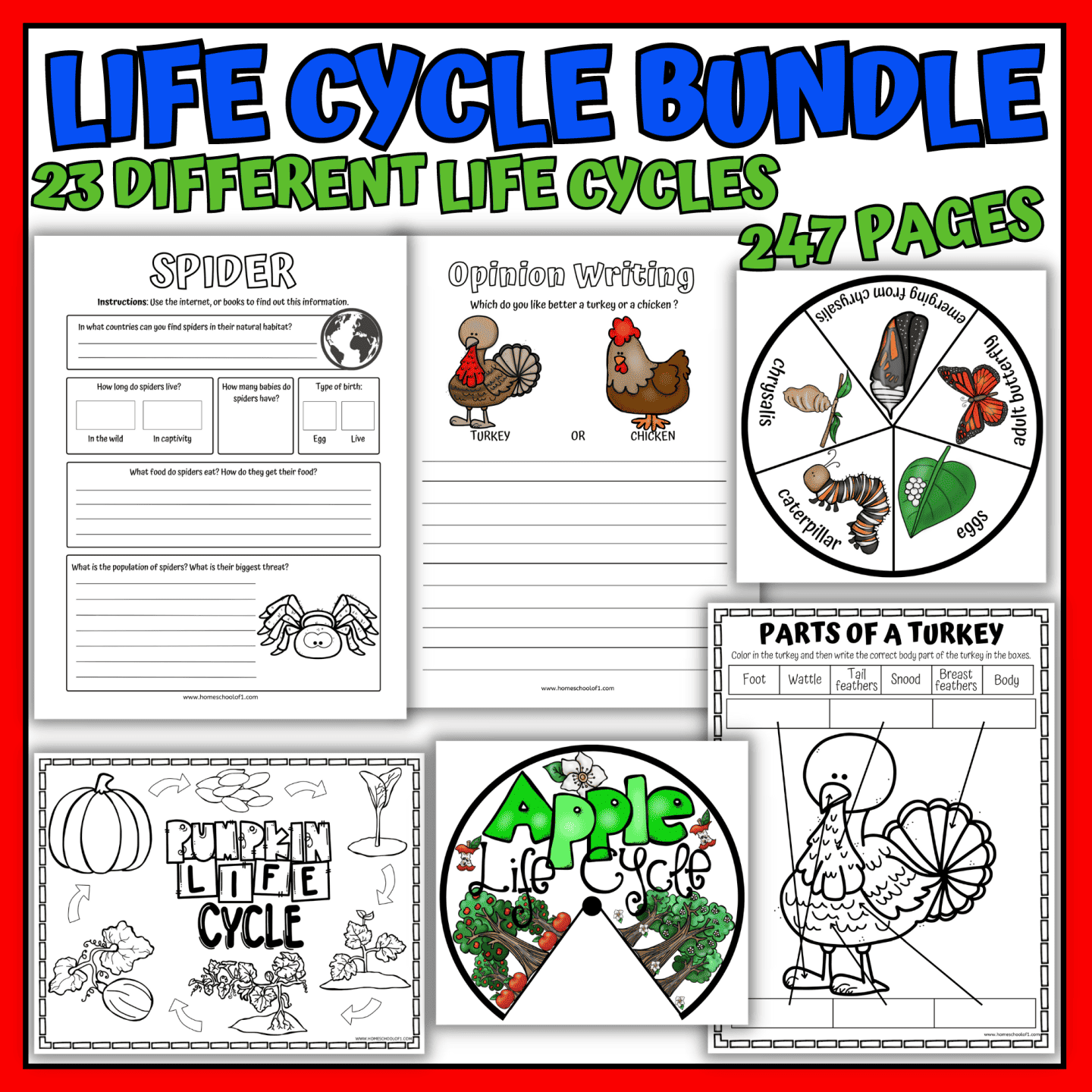Life Cycle of a Penguin Worksheet for Kids
This life cycle of a penguin worksheet is a fun and engaging way for kids to explore how penguins grow, from egg to adulthood.
With a mix of coloring, labeling, writing prompts, and memory games, it’s ideal for 1st to 4th grade and works well in both homeschool and classroom settings.
We’ve used it as part of our animal science unit, and it’s become one of our favorite life cycle worksheets.
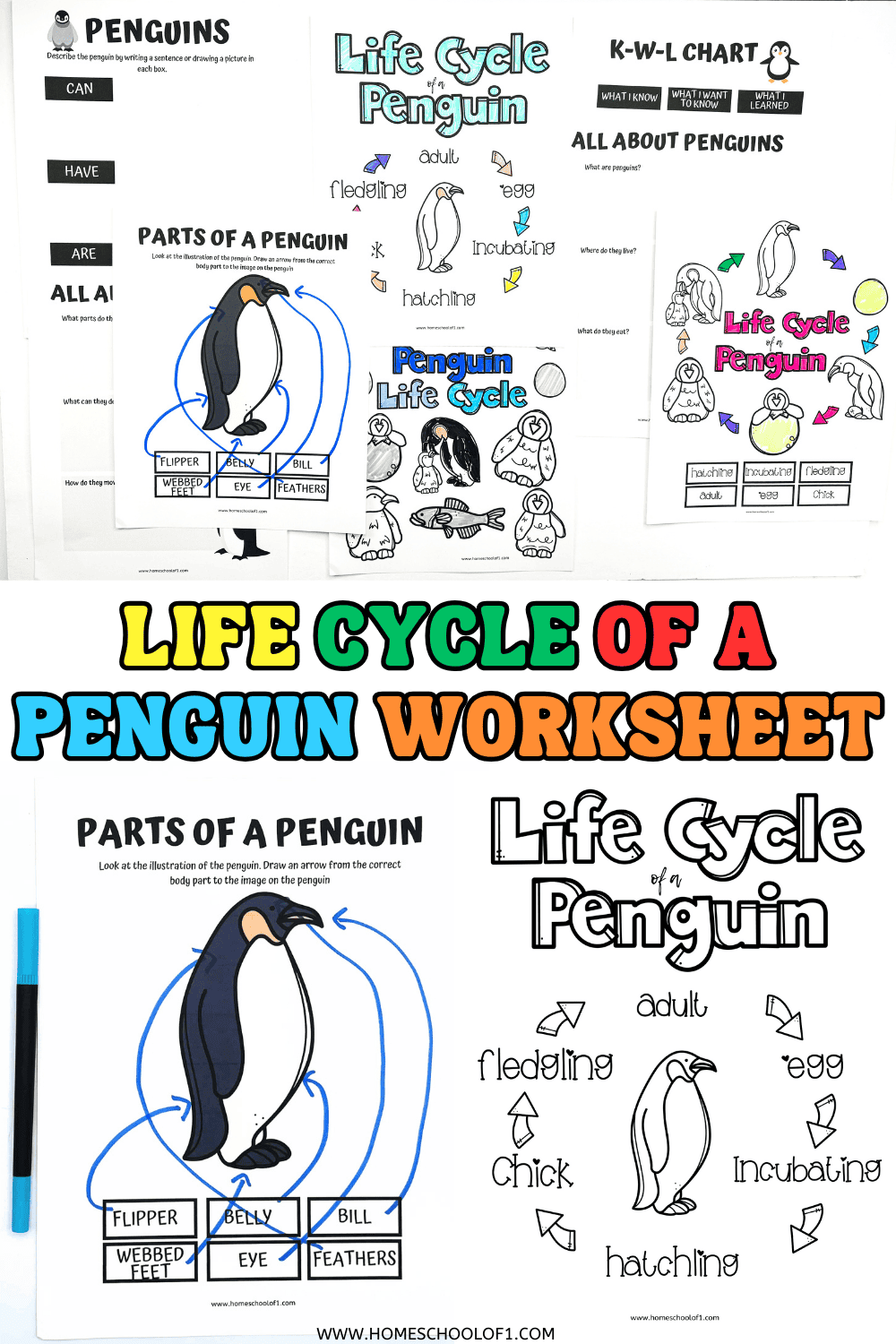
**This post may contain affiliate links. As an Amazon Associate and a participant in other affiliate programs, I earn a commission on qualifying purchases.**
Penguin Life Cycle Worksheet
This penguin life cycle worksheet pack has been a big hit in our home. It’s low prep, fun to use, and filled with a variety of activities that kept Freddie interested from start to finish. With 10 printable pages, it’s perfect for tying into science lessons or just exploring penguins for fun.
Here’s what’s included:
Start with the cover page – We print this first so everything stays neat in Freddie’s science folder. It’s a small thing, but having a “cover” makes it feel like a real mini-unit.
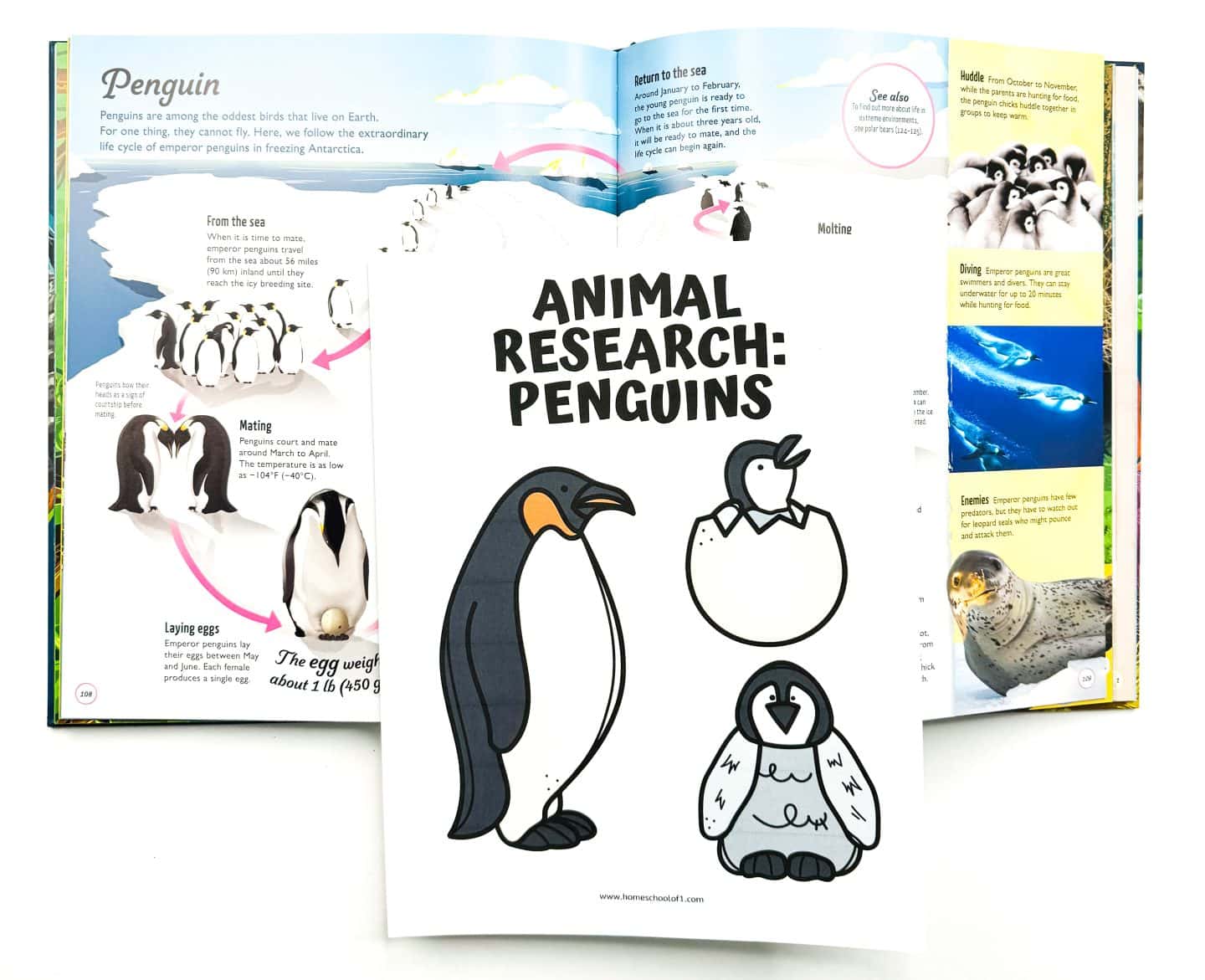
Explore the life cycle step by step – The next three pages walk through the stages of a penguin’s life—from egg to chick to adult.
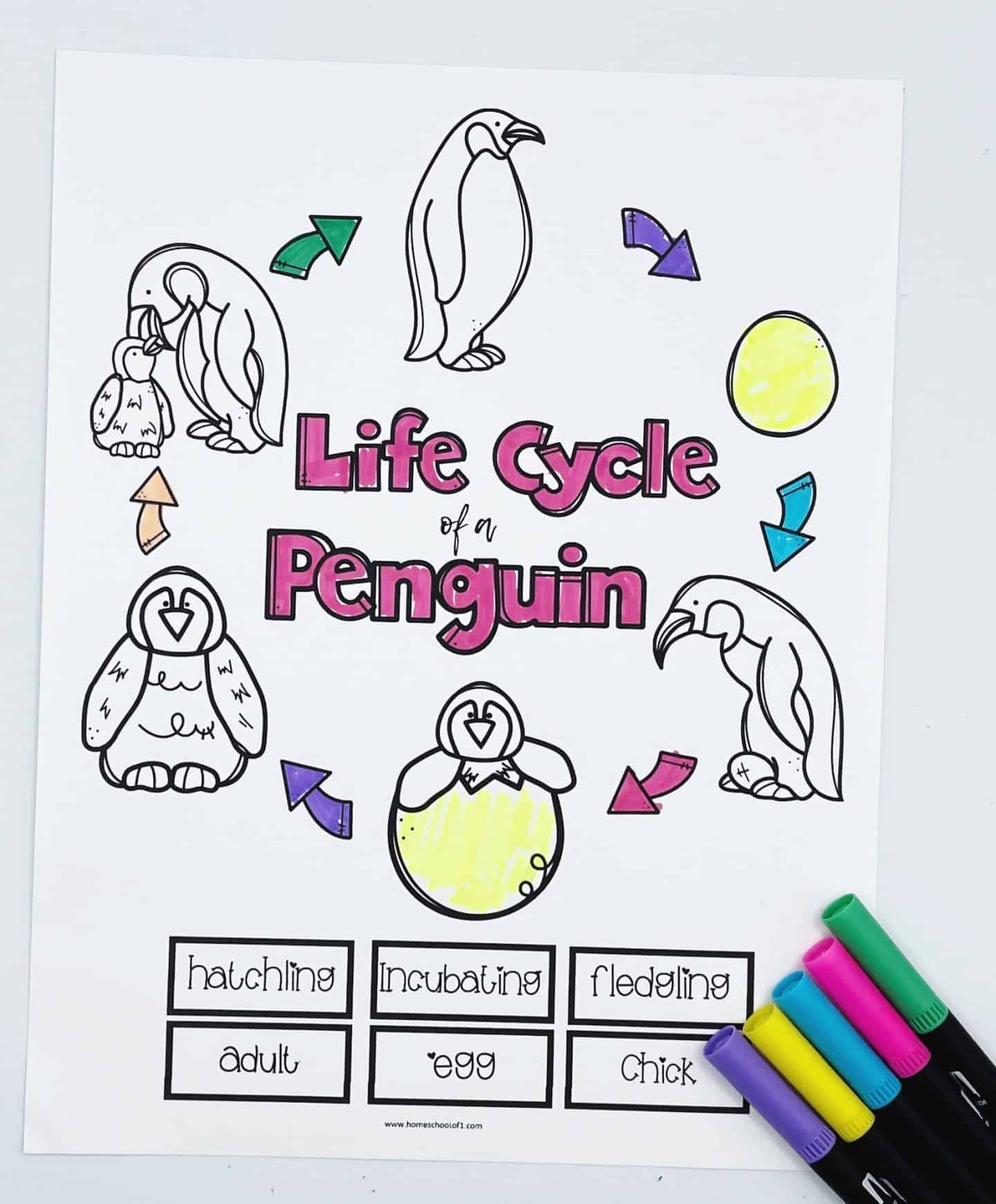
Kids get to color each stage and label it, which makes it easier to remember.
We like to take a minute between pages to chat about what’s happening at each stage.
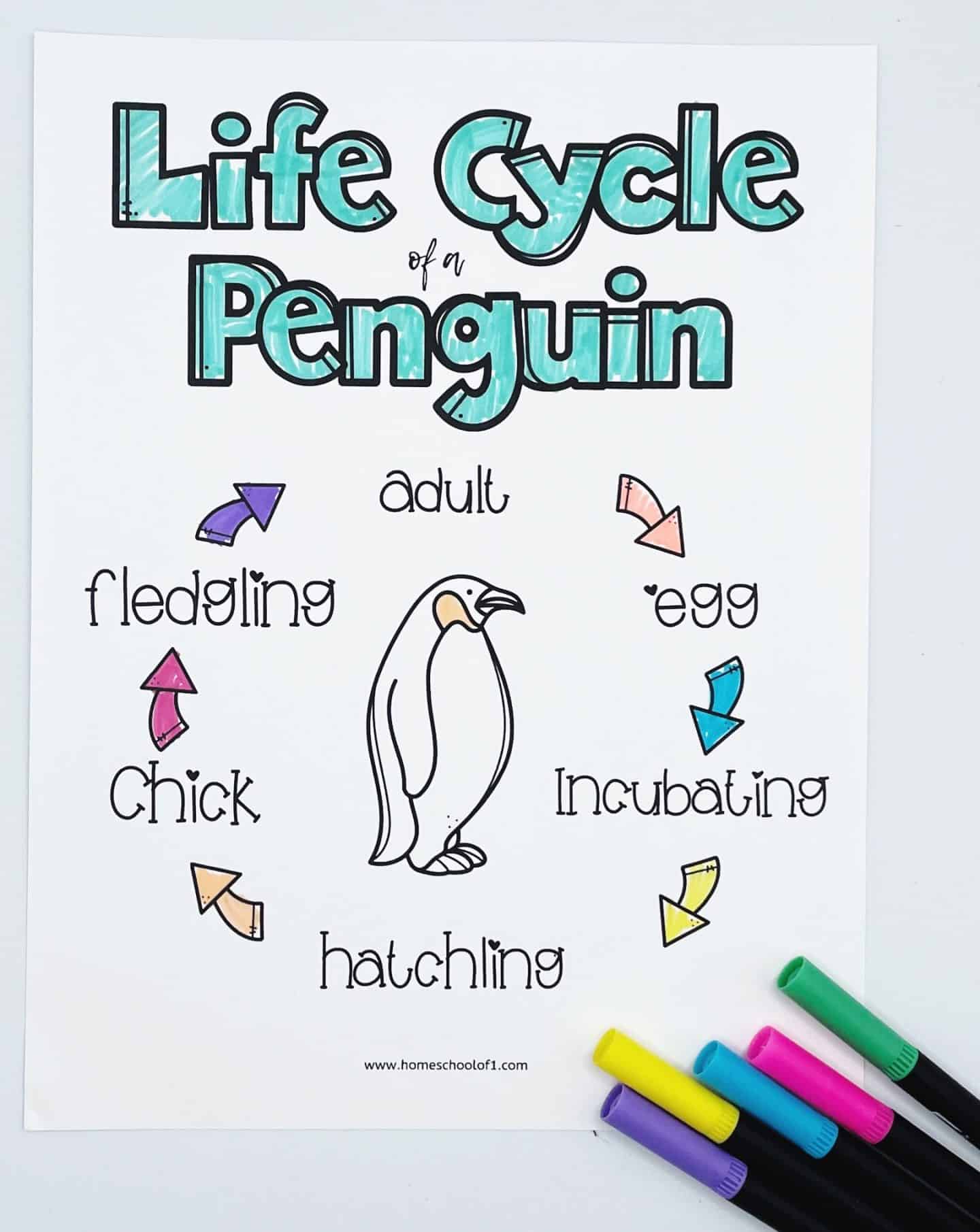
Use the K-W-L chart to guide your learning – This is always our go-to when starting a new topic. Freddie fills in what he already knows about penguins (usually more than I expect), then adds questions he’s curious about. We come back to finish the “learned” column once the activities are done.
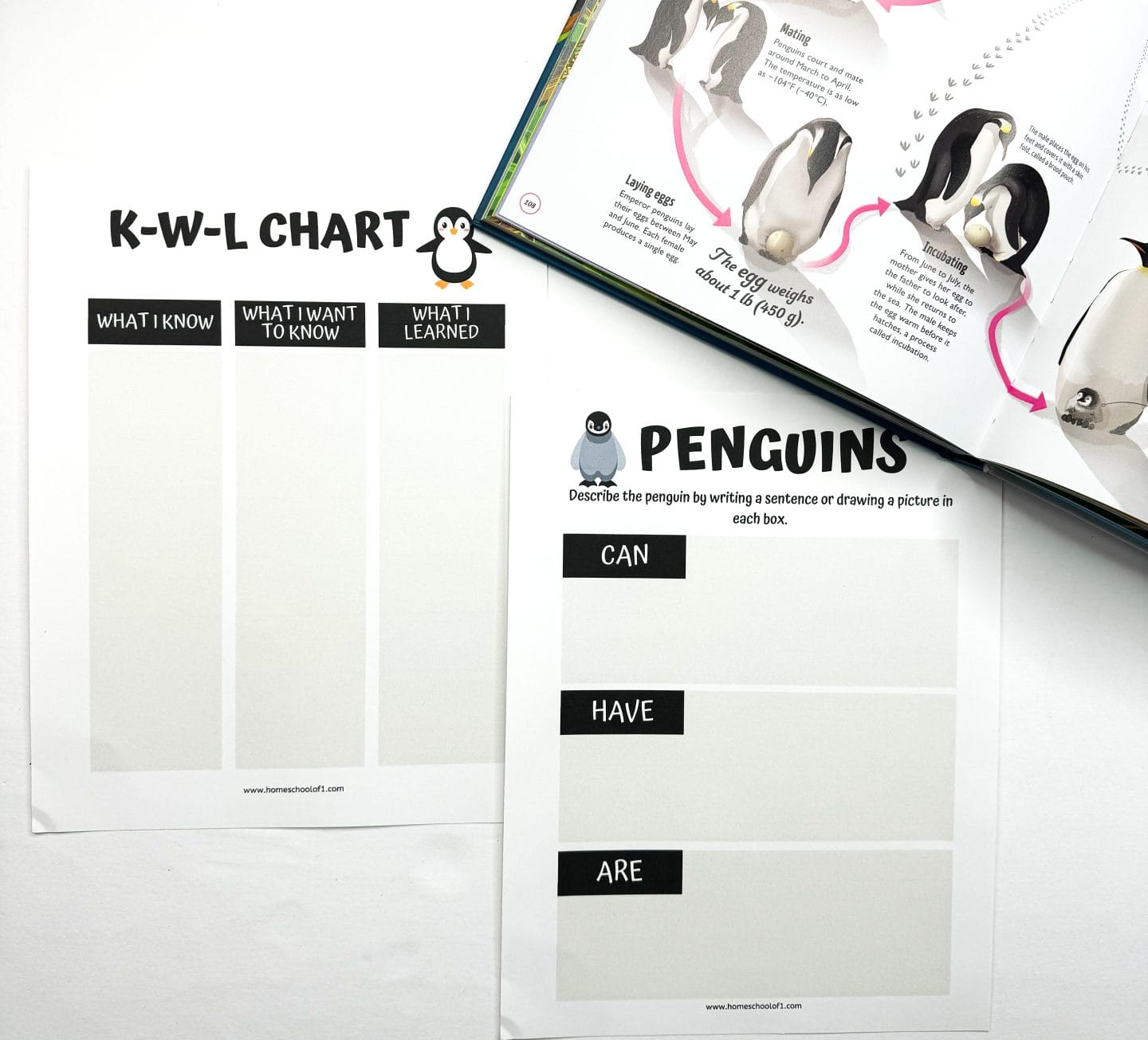
Write with “Penguins can, have, are” – It’s a quick, structured writing activity that helps younger learners organize their thoughts.
Plus, it sparks great follow-up discussions—Freddie wrote “Penguins can slide on their bellies,” and we ended up watching videos of them doing just that.
Penguin facts – The “All About Penguins” page works well as a short writing prompt or mini research project. We usually pair this with a library book or short documentary.
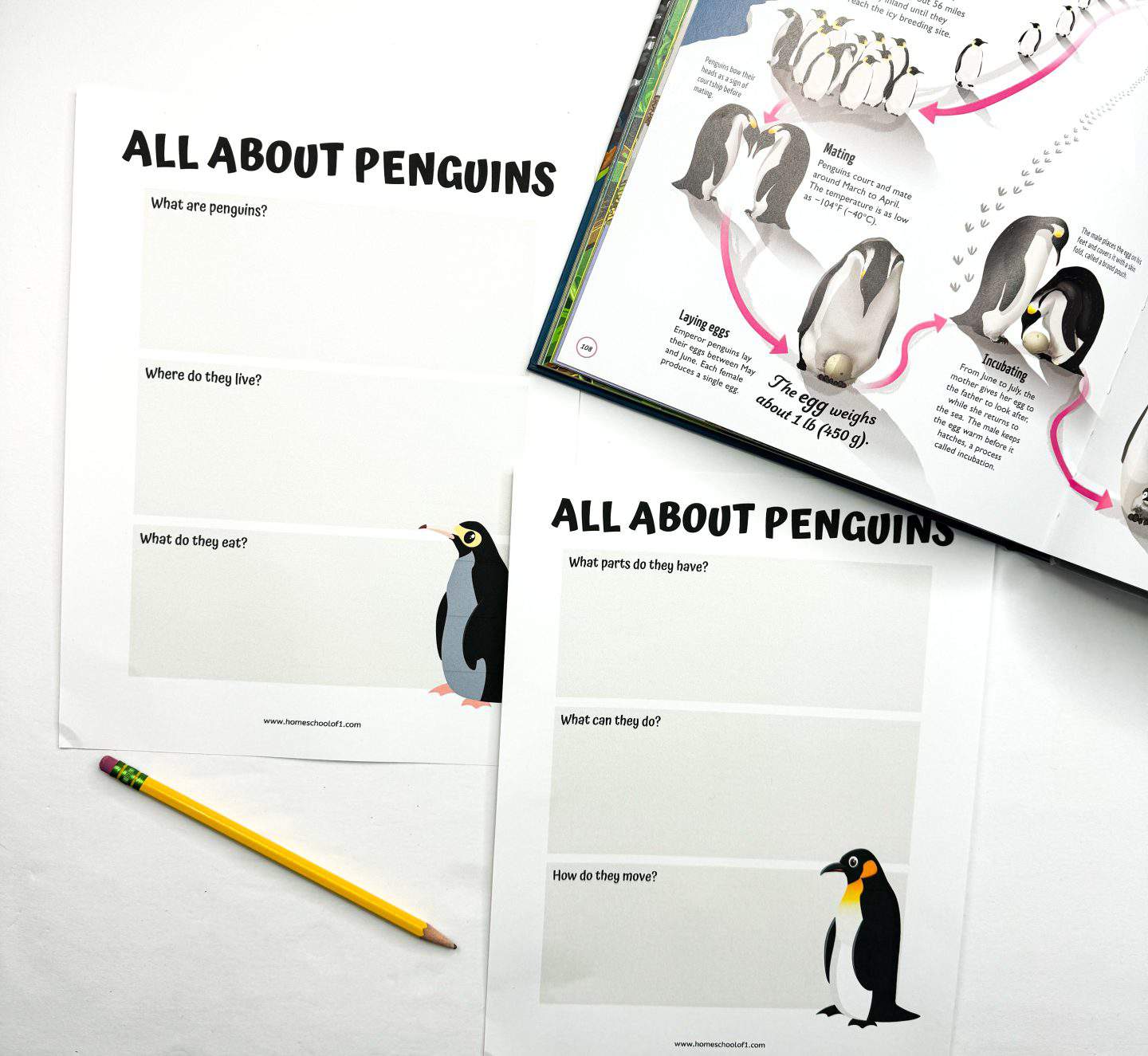
Label the parts of a penguin – Kids draw arrows to label body parts like beak, flippers, and feet. It’s a simple worksheet, but great for vocabulary reinforcement. We sometimes turn it into a quiz and take turns pointing to parts while the other names them.
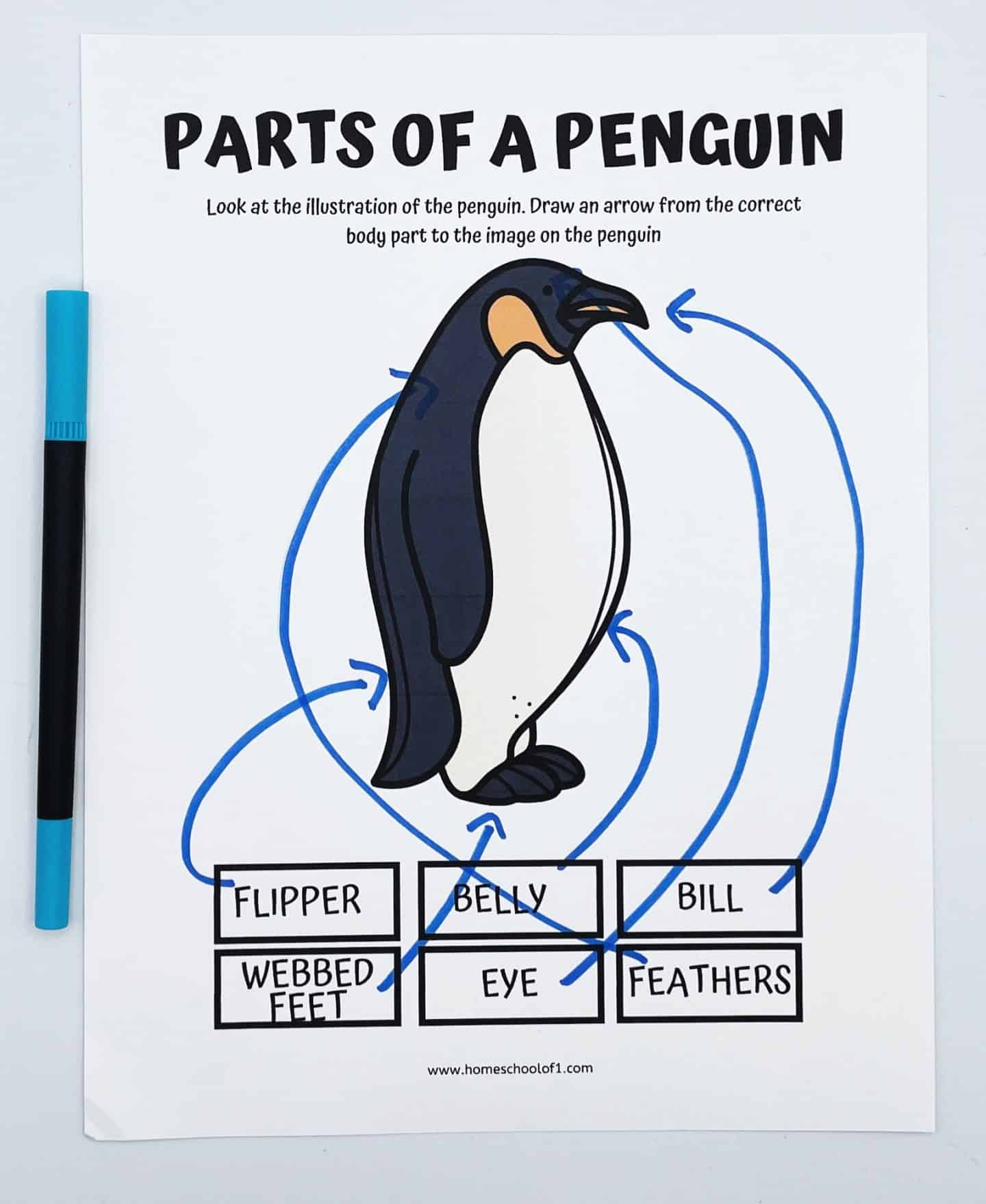
Wrap up with a penguin memory game – This penguin memory match game has stayed in our rotation even after the unit ended. Print it twice, cut the cards, and you’re ready to go. We keep our set in a ziplock bag so we can reuse it whenever.

We enjoy including the Life Cycles book in our studies to enhance our understanding of how different animals grow and change.
Fun Penguin Life Cycle Facts for Kids
The penguin life cycle always captures Freddie’s attention—there’s just something about these birds that kids find fascinating. If your learners are anything like mine, they’ll love these fun (and slightly surprising) penguin facts:
Penguins lay their eggs in nests or, in some cases, directly on the ground. Emperor penguins are probably the coolest here—literally and figuratively—they balance their eggs on their feet to keep them warm in freezing temperatures. Most species lay two eggs, but Emperor and King penguins usually stick to just one.
When the chicks hatch, they’re covered in soft down feathers and rely entirely on their parents. Both mom and dad take turns feeding them by regurgitating food. In colder climates, like Antarctica, Emperor chicks often huddle together in groups called crèches while their parents hunt.
As they grow, the chicks lose their fluffy down and develop waterproof feathers. That’s their cue to leave the nest and hit the water—it’s a tough stage because they need to learn to swim and hunt fast to survive on their own.
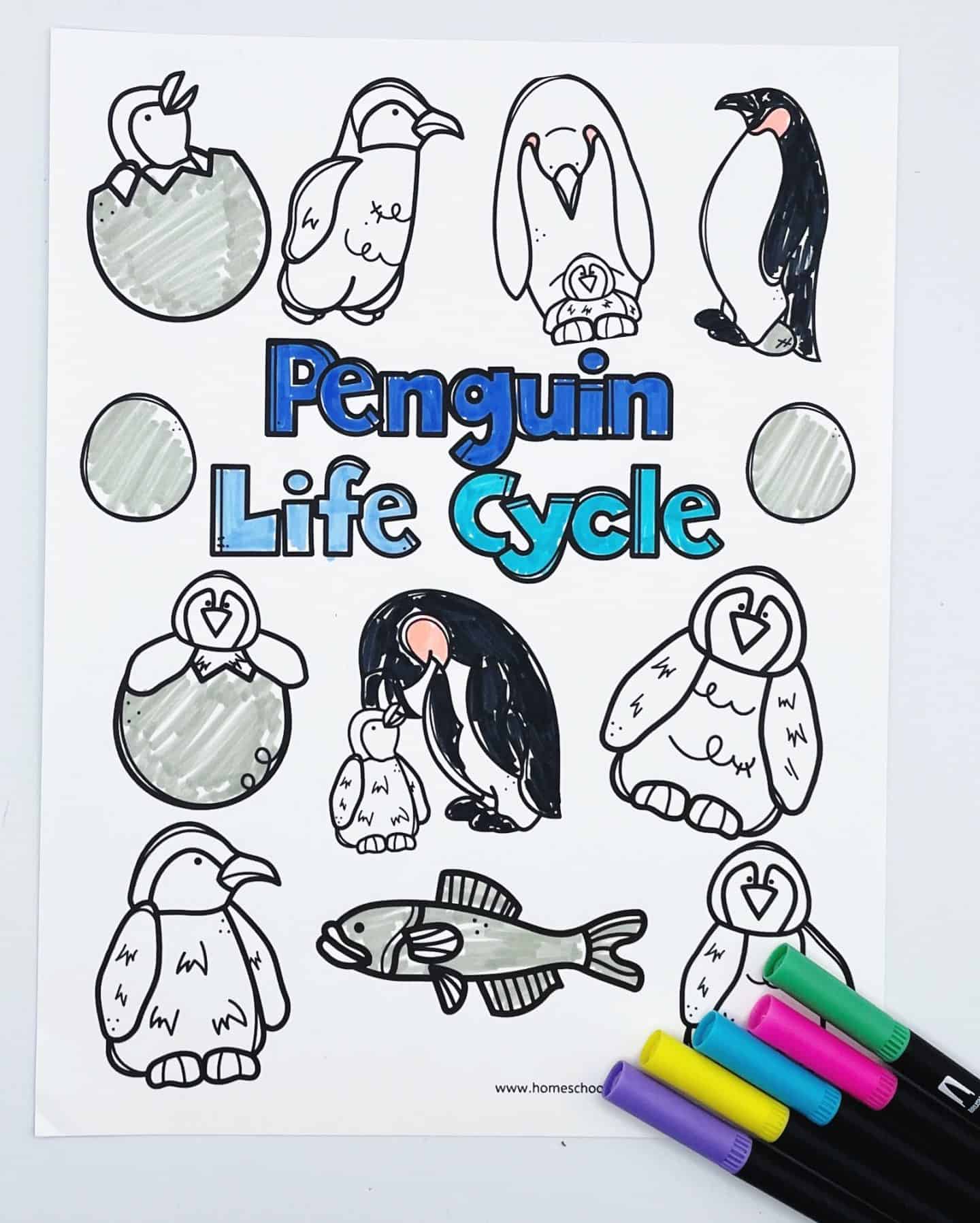
For the next few years, young penguins stay at sea, maturing before returning to land to molt. Molting is pretty intense—they shed all their feathers and grow new ones, and during that time, they can’t swim or eat, so they survive on stored fat.
Most penguins reach adulthood somewhere between 3 and 8 years old, depending on the species. They return to the same colony where they were born, find a mate, and begin the life cycle again. Some species even stay with the same mate for life.
While some penguins migrate great distances between their breeding and feeding grounds, others stick close to home year-round—another cool difference kids love pointing out.
Want to explore more animal life cycles?
After learning about penguins, we also had fun comparing them to cold-weather animals like reindeer. Check out our life cycle of a reindeer worksheet for a winter-themed science activity!
More Penguin Worksheets
If your kids are still excited about penguins after working through the life cycle set, there’s plenty more to enjoy.
We’ve pulled together some of our favorite penguin activities that cover a mix of subjects and age ranges.
- We started by learning about different species using our types of penguin worksheet, which sparked great conversations about where each one lives and how they adapt to their environment.
- For younger learners, penguin handprint art is a fun and simple craft that’s easy to prep and perfect for little hands.
- You’ll also find penguin math worksheets from Homeschool Preschool that help early learners build number sense with counting, sorting, and basic addition—all with a penguin twist.
- For older kids, mix in literacy and science penguin worksheets to dig deeper into habitats, adaptations, and reading comprehension—all while sticking with the theme.
Penguin Books to Pair With Your Life Cycle Worksheet
If you’re looking to expand the lesson, these penguin books have worked really well alongside our worksheets:
- National Geographic Readers: Penguins! – Easy to read and full of real photos, it’s a favorite for visual learners.
- The Emperor’s Egg – A beautifully illustrated story that explains Emperor penguin parenting in a kid-friendly way.
- Penguins! – A great nonfiction option packed with facts and perfect for early elementary readers.
Get the Free Life Cycle of a Penguin Printables Here!
If you are running short on time you can download all of our life cycle worksheets. There are 247 pages over 23 different life cycles.
Ready to grab your free printable? Just pop your name and email into the form below, and it’s all yours!
If you don’t see the form below, click here to get the free penguin worksheets.
Last Updated on 27 April 2025 by Clare Brown

